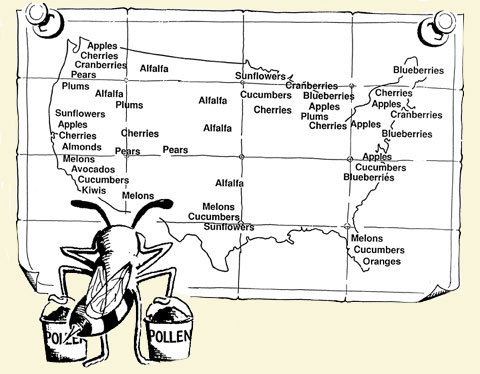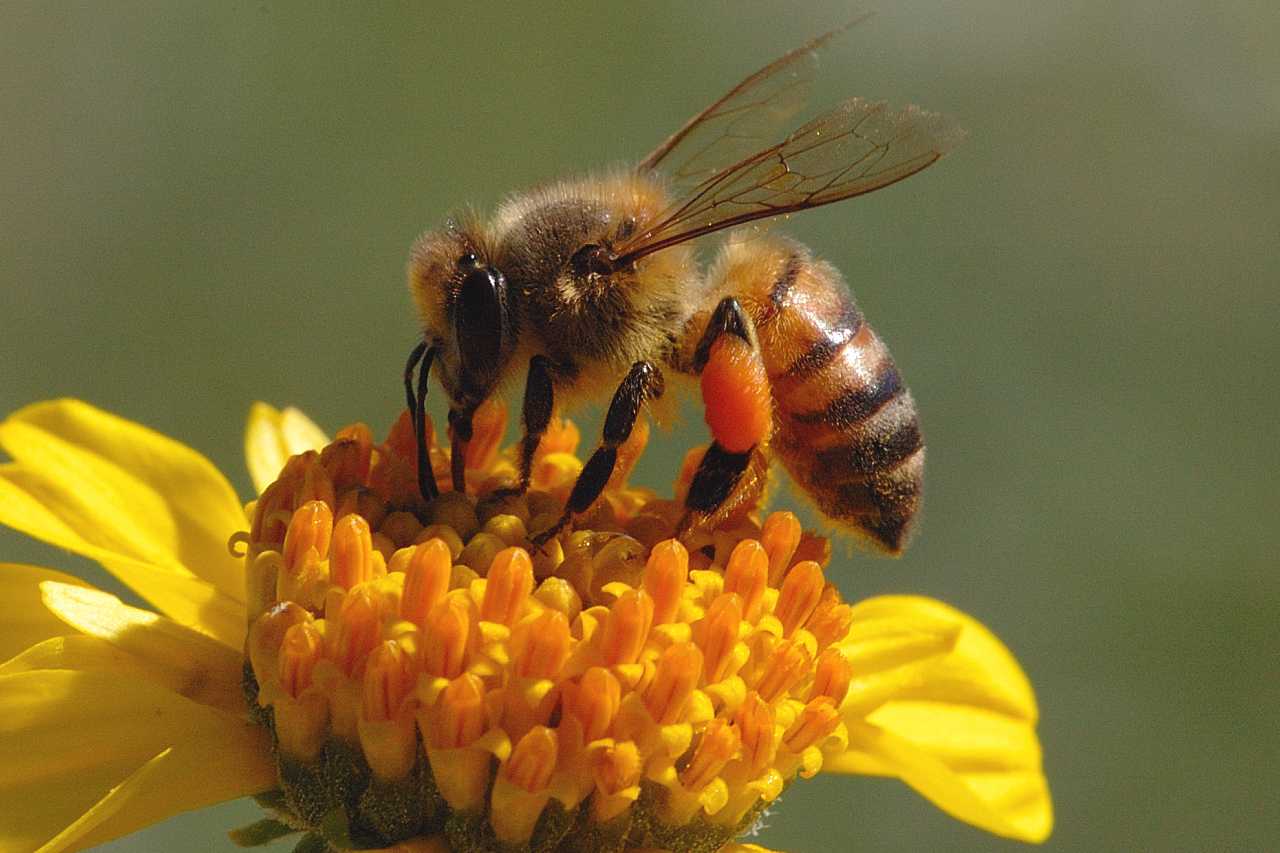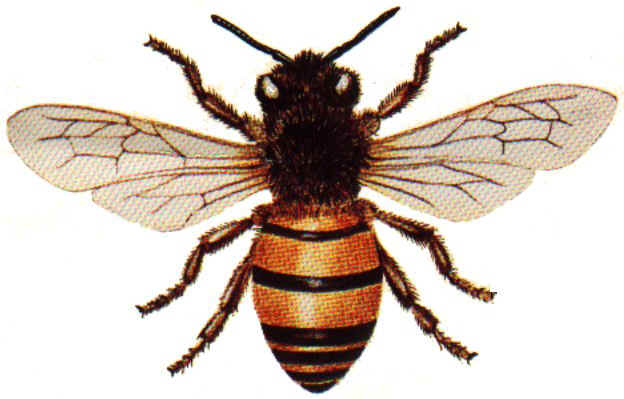HONEY BEE
Honey Bees are among the most beneficial of bugs. They eat nectar (a sweet liquid) made by flowers and they turn the nectar into honey, which is a very popular sweetener used by people all over the world, and enjoyed by many other animals (bears LOVE honey). If we did not have bees, food crops would not get pollinated. Then the fruit and vegetables we eat and the trees we get our oxygen from would all disappear.
In addition to making honey, honey bees are important pollinators. When they fly from flower to flower to collect nectar, honey bees are also gathering pollen. Pollen from many different plants gets stuck to hairs on the bee's hind legs. The pollen is then rubbed off when the bee flies to anther flower, and the new flower is pollinated (fertilized so it will produce seeds). Honey bees are very important pollinators of plants in North America.
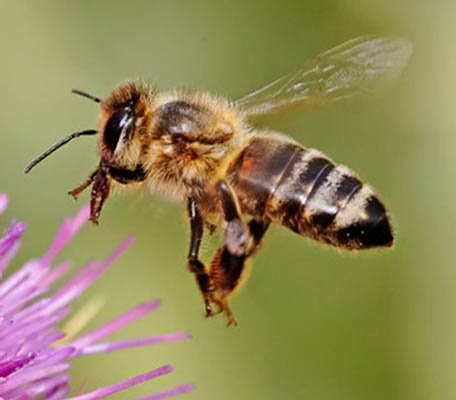
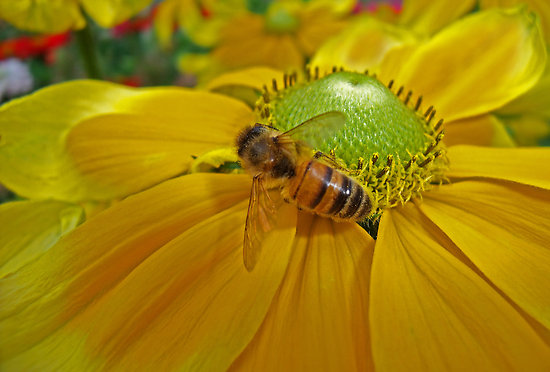
photo by Belinda Menpes http://fineartamerica.com/profiles/bel-menpes.html
Bees fly very quickly - about 15 miles per hour. Adult bees measure ¾-inch long and are fuzzy, with gold and black stripes and transparent wings. Honey bees can often be identified by the balls of yellow pollen they carry on the backs of their legs.
Bees live in hives. All the members of a hive are related to each other. There are three types of honey bees:
-
the queen (who lays eggs)
-
workers - females who gather food, make honey, build the six-sided honeycomb, tend eggs, and guard the hive
-
drones - males who mate with the queen.
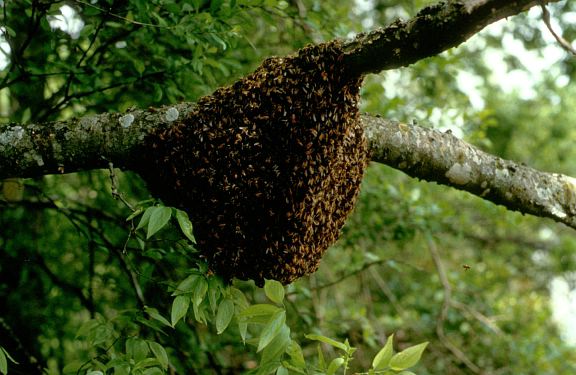
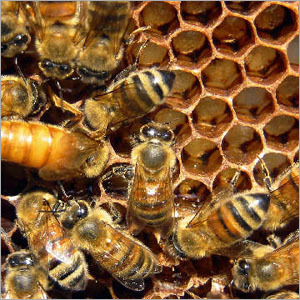
Honeybees have lived on Earth for over 45 million years old. Scientists found a honey bee that was 45 million years old incased in petrified amber and it looked nearly unchanged from how it looks today. Many scientists believe that honeybees have lived on earth for more than 200 million years. If that is true, then bees are one of the few remaining creatures that actually lived in the time of the dinosaur. Honey bees are not native to the Americas. During the 1600's, settlers brought honey bee colonies with them from Europe.
Bees have numerous predators (enemies), including humans. When predators take the honey, pollen, and beeswax that the bee colony produces for its survival, the bee colony can die. In recent years, honey bees have been decreasing in number and scientists do not really understand why. Because honey bees have many predators, they have developed effective defense strategies. They have a painful sting. Some people have such strong allergic reactions to bee stings that a sting can kill them. If they are left alone and are not provoked, honey bees rarely use their stingers. Honey bees can only sting once - if they do sting, then they die.
Pollination Map for Honey Bees in the United States
